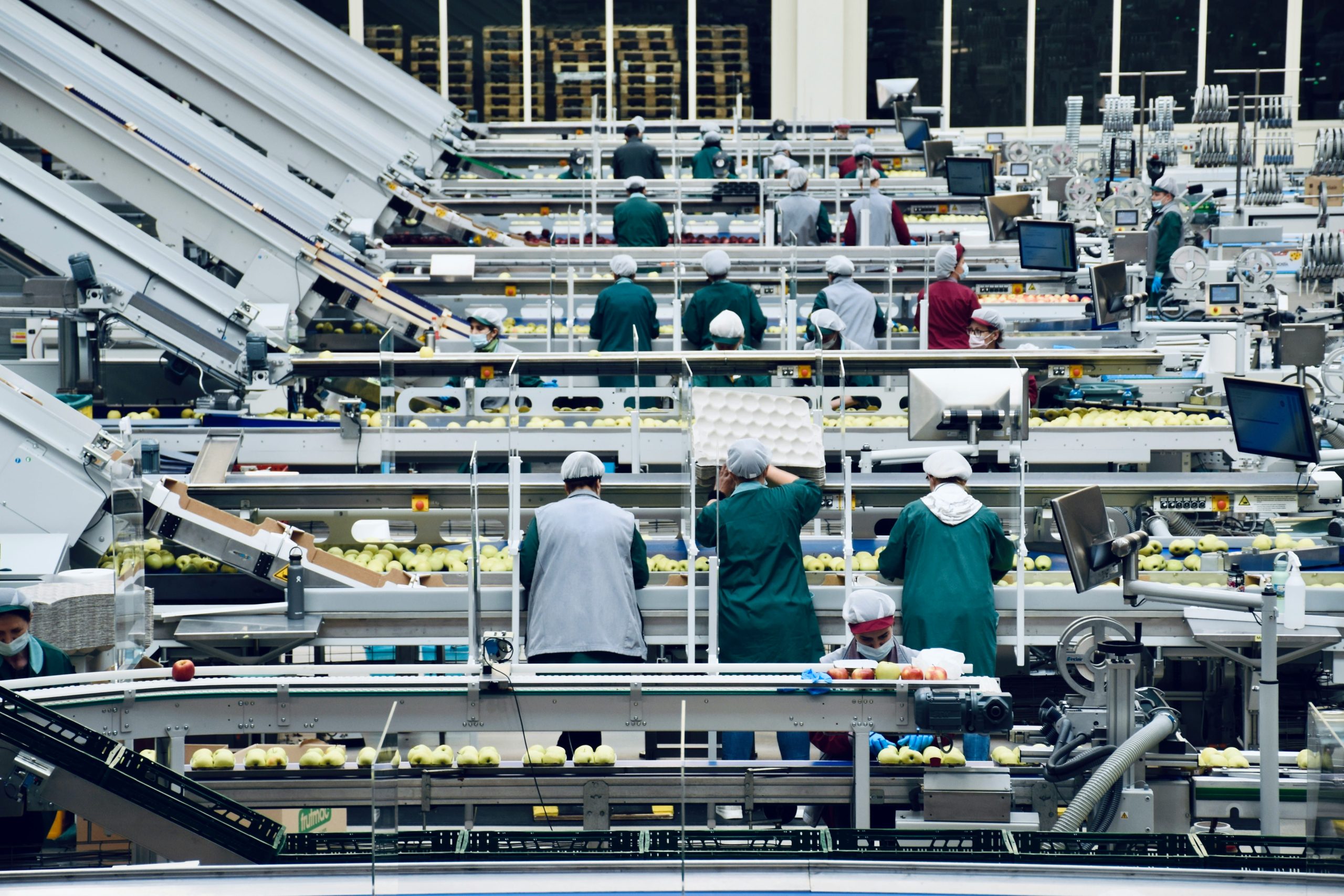The Americas’ Economic Powerhouses: Which Industries Are Leading the Charge in 2024
Standing at the crossroads of economic transformation, the Americas are experiencing unprecedented growth across multiple sectors. Having spent the last decade analyzing regional market dynamics, I’ve witnessed firsthand how traditional industries are being reshaped while entirely new sectors emerge seemingly overnight. What strikes me most about today’s growth landscape is how interconnected these industries have become. The renewable energy boom in Chile isn’t just changing that country’s energy matrix—it’s creating ripple effects across manufacturing, technology, and financial services throughout the region. Similarly, Brazil’s fintech explosion isn’t contained within banking; it’s revolutionizing everything from agriculture to retail. According to recent economic data1, the Americas collectively represent over 35% of global GDP growth in emerging sectors, with five key industries driving this expansion. These aren’t just statistical outliers—they’re fundamental shifts that will define the next decade of economic opportunity.Key Growth Indicators
The International Monetary Fund projects that technology-driven sectors across the Americas will grow at an average rate of 12.3% annually through 2027, significantly outpacing traditional industries. This represents the fastest sustained growth period since the post-war industrial boom.
Americas Innovation Hub: The region now hosts 47% of the world’s unicorn startups outside of Asia and Europe, with over 180 companies valued at $1 billion or more. This represents a 340% increase from 2018 figures, demonstrating the accelerating pace of innovation across North, Central, and South America.
Technology & Digital Innovation: The Continental Engine
The technology sector across the Americas has evolved far beyond Silicon Valley’s influence, creating distinct regional hubs that reflect local needs and advantages. What excites me most is how these centers are solving uniquely American challenges while building globally competitive solutions. Brazil’s software development sector exemplifies this transformation. With over 13.8 million developers3, the country has become Latin America’s technology powerhouse. I remember visiting São Paulo’s tech corridor in 2019 and being struck by the sophistication of fintech solutions being developed there. These weren’t copies of Silicon Valley products—they were innovative responses to Brazil’s specific banking and payment challenges.| Country | Tech Sector Growth (2023) | Key Specializations | Notable Companies |
|---|---|---|---|
| Brazil | 18.2% | Fintech, E-commerce | PagSeguro, Mercado Livre |
| Mexico | 15.7% | Software Development, Manufacturing Tech | Clip, Kavak |
| Canada | 14.3% | AI, Clean Tech | Shopify, Cohere |
| Colombia | 21.4% | Digital Services, Logistics Tech | Rappi, Credibanco |
Emerging Technology Trends
The integration of artificial intelligence into traditional industries is creating entirely new business models. Agricultural technology companies are using machine learning to optimize crop yields, while logistics firms are deploying AI for route optimization and demand forecasting. Blockchain technology, despite earlier skepticism, is finding practical applications in supply chain management and financial services. I’ve been particularly impressed by applications in commodity trading, where blockchain’s transparency and immutability solve real problems in international commerce. The Internet of Things (IoT) is experiencing remarkable growth in manufacturing and smart city applications. Mexican manufacturers are implementing IoT solutions to improve efficiency, while Canadian cities are using connected sensors to optimize energy consumption and traffic flow.
Renewable Energy & Sustainability: Powering the Future
The renewable energy transformation across the Americas represents one of the most significant industrial shifts I’ve witnessed in my career. This isn’t just about environmental consciousness—it’s about economic opportunity, energy independence, and technological leadership. Chile’s renewable energy sector has become a global case study in successful transition. The country now generates over 50% of its electricity from renewable sources5, a remarkable achievement considering it was heavily dependent on imported fossil fuels just a decade ago. What impresses me most is how this transition has created an entirely new ecosystem of related industries. Mexico’s renewable energy market is experiencing explosive growth, driven by both domestic demand and international investment. The country’s wind power capacity has increased by 400% since 20156, with major projects in Oaxaca and Tamaulipas leading the way. I’ve visited several of these installations, and the scale of development is genuinely breathtaking.Energy Investment Surge
Private investment in renewable energy projects across the Americas reached $89.4 billion in 2023, representing a 34% increase from the previous year. This capital influx is funding everything from utility-scale solar installations to innovative storage solutions.
- Solar power installations grew by 67% across the Americas in 2023
- Wind energy capacity increased by 23% year-over-year
- Energy storage deployments rose by 156% compared to 2022
- Green hydrogen projects attracted $12.3 billion in new investment
- Electric vehicle charging infrastructure expanded by 89%
Healthcare & Biotechnology: Innovation Meets Necessity
The healthcare and biotechnology sectors across the Americas have experienced unprecedented growth, accelerated by the pandemic but sustained by fundamental demographic and technological trends. Having worked with several healthcare technology companies, I’ve seen firsthand how innovation is transforming patient care and creating new economic opportunities. Argentina’s biotechnology sector has emerged as a regional powerhouse, leveraging the country’s strong scientific research tradition and agricultural expertise. The development of genetically modified crops has created a thriving biotech ecosystem that’s now expanding into pharmaceuticals and medical devices.| Healthcare Segment | Growth Rate (2023) | Market Value | Key Drivers |
|---|---|---|---|
| Digital Health | 28.5% | $34.2B | Telemedicine, AI Diagnostics |
| Biotechnology | 19.7% | $67.8B | Gene Therapy, Personalized Medicine |
| Medical Devices | 16.2% | $89.3B | Minimally Invasive Surgery, Wearables |
Financial Technology Services: Democratizing Finance
The financial technology revolution across the Americas has been nothing short of transformative. What started as simple payment solutions has evolved into a comprehensive reimagining of how financial services are delivered, accessed, and experienced. Brazil’s fintech sector leads the region in both innovation and scale. With over 750 fintech companies7, the country has created a competitive ecosystem that’s driving down costs and improving access to financial services. I’ve been particularly impressed by the development of PIX, Brazil’s instant payment system, which processed over 31 billion transactions in 2023. Mexico’s fintech growth has been equally remarkable, driven by a large unbanked population and supportive regulatory environment. The country’s fintech law, enacted in 2018, has created a framework that encourages innovation while protecting consumers. This balanced approach has attracted significant international investment and fostered domestic innovation.Fintech Investment Surge
Venture capital investment in Americas-based fintech companies reached $8.9 billion in 2023, with 67% of funding going to companies focused on financial inclusion and small business lending. This represents a 45% increase from 2022 levels.
E-commerce & Logistics: The Infrastructure of Digital Commerce
The e-commerce and logistics sectors have experienced unprecedented growth, fundamentally changing how goods move across the Americas. This transformation extends far beyond online retail—it’s reshaping supply chains, creating new employment opportunities, and driving infrastructure development. Argentina’s e-commerce market has grown by 76% since 20208, creating opportunities throughout the logistics value chain. From last-mile delivery to warehouse automation, the entire ecosystem is experiencing rapid expansion and innovation.- Cross-border e-commerce platforms connecting regional markets
- Automated fulfillment centers reducing delivery times and costs
- Same-day delivery services expanding to secondary cities
- Sustainable packaging solutions meeting environmental regulations
- AI-powered demand forecasting improving inventory management
Investment & Career Implications: Navigating the New Landscape
For professionals and investors, these rapidly growing industries present both tremendous opportunities and significant risks. Based on my analysis of market trends and regulatory developments, several key considerations emerge. Career opportunities in these sectors are expanding rapidly, but they require continuous learning and adaptation. The most successful professionals I’ve observed combine domain expertise with technology skills and maintain a continental perspective on market opportunities.References



